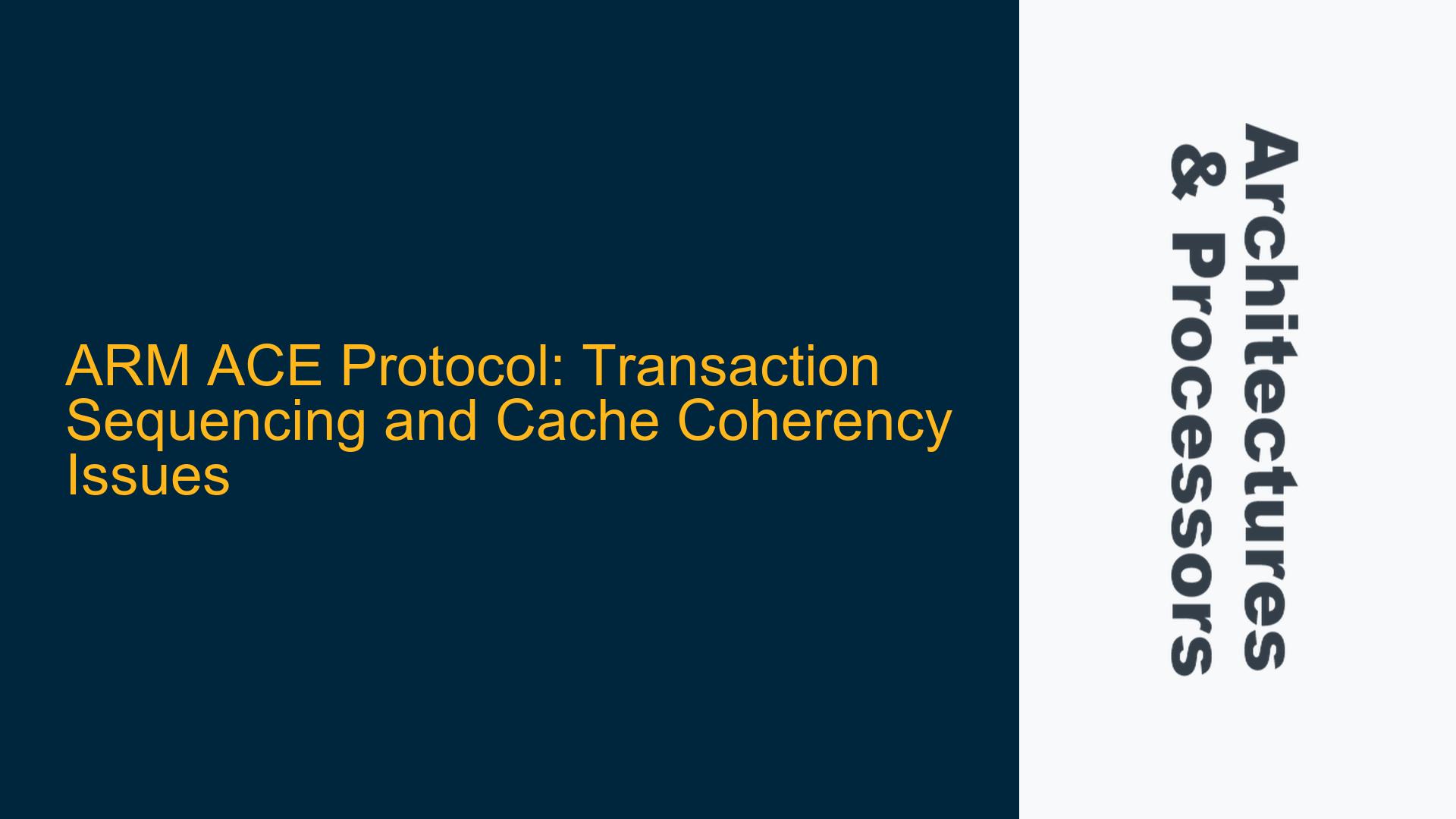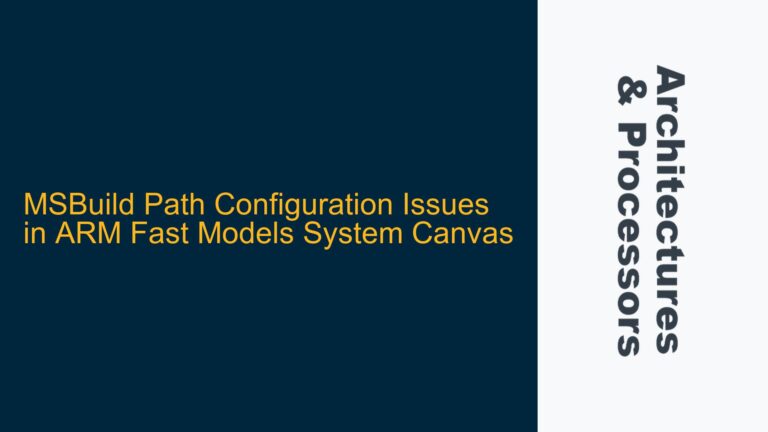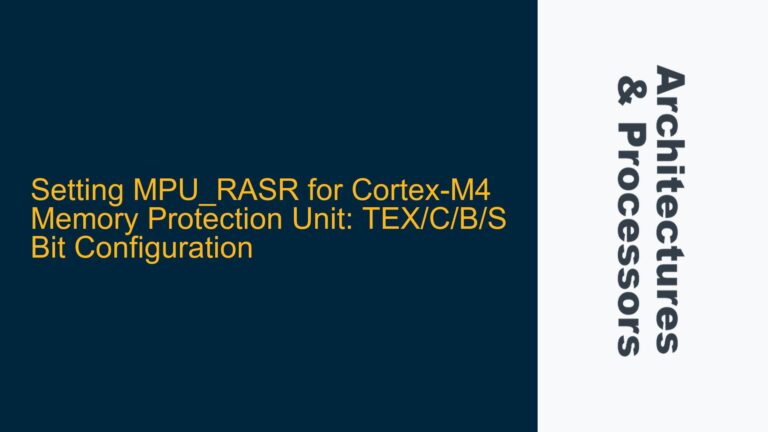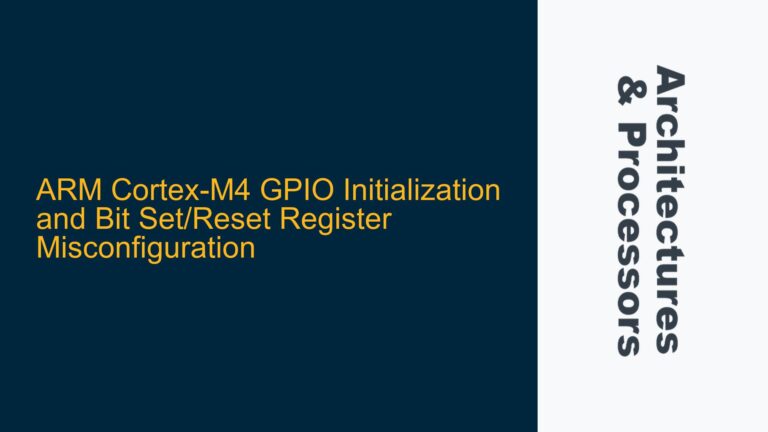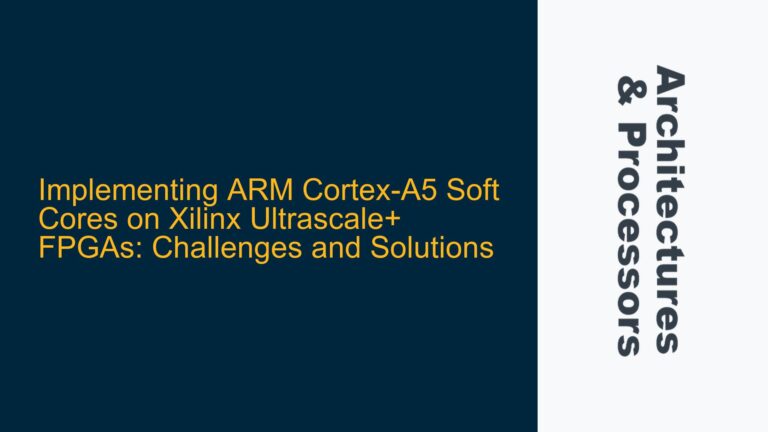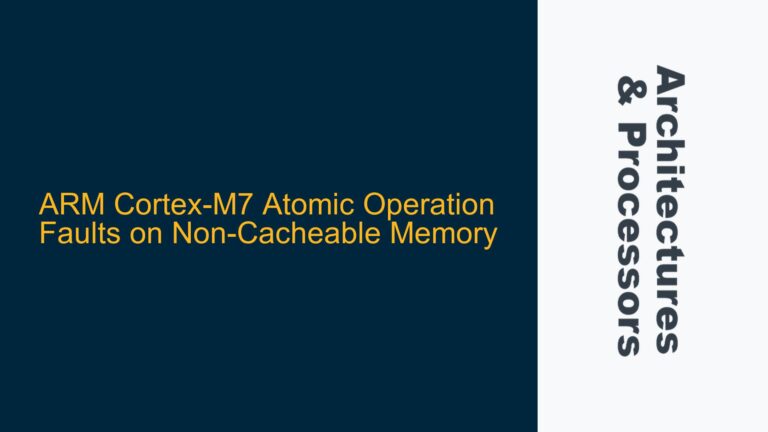ARM ACE Protocol Transaction Sequencing and Cache Line Contention
In ARM-based systems utilizing the ACE (AXI Coherency Extensions) protocol, transaction sequencing and cache coherency are critical to maintaining system integrity and performance. The ACE protocol ensures that multiple managers (e.g., CPUs, GPUs, or other masters) can coherently access shared memory regions without violating the coherency rules. However, this introduces complexities when multiple managers attempt to access the same cache line simultaneously, leading to potential contention and ordering issues.
The core issue arises when two or more ACE managers issue coherent transactions (e.g., MakeUnique, CleanInvalid) targeting the same cache line. The interconnect must sequence these transactions to ensure that all components in the system observe the same order of operations. This sequencing is necessary to prevent scenarios where multiple managers hold the same cache line in an exclusive state, which would violate the coherency protocol.
For example, consider a system with two ACE managers, M0 and M1, both holding a cache line in the Shared state. If both managers issue a MakeUnique transaction to upgrade their cache line state to Unique, the interconnect must decide the order in which these transactions are processed. The interconnect may stall one transaction while allowing the other to proceed, ensuring that only one manager holds the cache line in the Unique state at any given time. This sequencing is critical to maintaining coherency but can lead to performance bottlenecks if not managed efficiently.
The cache line in question is typically a 64-byte region of memory, as defined by the ARM architecture. When a snoop transaction (e.g., CleanInvalid) is issued by the interconnect to a manager, it indicates that another manager has requested exclusive access to the same cache line. The manager receiving the snoop transaction must invalidate or clean its copy of the cache line, depending on the transaction type, and acknowledge the snoop request. This process ensures that only one manager holds the cache line in a modified or exclusive state at any given time.
Memory Barrier Omission and Cache Invalidation Timing
One of the primary causes of transaction sequencing issues in ARM ACE systems is the omission of memory barriers or improper handling of cache invalidation timing. Memory barriers are essential for enforcing the correct order of memory operations, especially in multi-core or multi-manager systems. Without proper memory barriers, transactions may be reordered by the interconnect or executed out of sequence, leading to coherency violations.
In the context of the ACE protocol, memory barriers ensure that all pending transactions are completed before new transactions are issued. For example, if a manager issues a MakeUnique transaction followed by a memory barrier, the barrier ensures that the MakeUnique transaction is fully completed before any subsequent transactions are initiated. This prevents scenarios where a manager issues a transaction but receives a snoop request for the same cache line before the transaction is acknowledged, leading to undefined behavior.
Cache invalidation timing is another critical factor in transaction sequencing. When a manager receives a snoop transaction, it must invalidate or clean its copy of the cache line before acknowledging the snoop request. If the cache invalidation is delayed or not performed correctly, the manager may continue to access stale data, leading to coherency violations. Proper cache management, including timely invalidation and cleaning, is essential to maintaining system coherency.
Additionally, the interconnect plays a crucial role in managing transaction sequencing and cache coherency. The interconnect must ensure that all transactions are ordered correctly and that snoop requests are issued in a timely manner. If the interconnect fails to sequence transactions properly or delays issuing snoop requests, it can lead to coherency violations and performance degradation.
Implementing Data Synchronization Barriers and Cache Management
To address transaction sequencing and cache coherency issues in ARM ACE systems, developers must implement data synchronization barriers (DSBs) and proper cache management techniques. Data synchronization barriers ensure that all pending memory operations are completed before new operations are initiated, preventing transaction reordering and coherency violations.
For example, when a manager issues a MakeUnique transaction, it should follow the transaction with a DSB to ensure that the MakeUnique operation is fully completed before any subsequent operations are initiated. This prevents scenarios where the manager receives a snoop request for the same cache line before the MakeUnique transaction is acknowledged, ensuring that the cache line is properly invalidated or cleaned.
Cache management is another critical aspect of maintaining coherency in ARM ACE systems. Managers must ensure that cache lines are invalidated or cleaned in a timely manner when receiving snoop requests. This can be achieved by implementing proper cache maintenance operations, such as cache clean and invalidate by virtual address (VA) or by set/way. These operations ensure that stale data is removed from the cache, preventing coherency violations.
The following table summarizes the key cache maintenance operations and their use cases:
| Operation | Description | Use Case |
|---|---|---|
| Clean by VA | Cleans (writes back) dirty data from the cache to memory | Preparing a cache line for invalidation or sharing with another manager |
| Invalidate by VA | Invalidates a cache line, removing it from the cache | Removing stale data from the cache after a snoop request |
| Clean and Invalidate by VA | Cleans and invalidates a cache line in a single operation | Efficiently preparing a cache line for exclusive access |
| Clean by Set/Way | Cleans all cache lines in a specific set/way | Bulk cache maintenance operations |
| Invalidate by Set/Way | Invalidates all cache lines in a specific set/way | Bulk cache maintenance operations |
In addition to data synchronization barriers and cache management, developers should also consider the following best practices to optimize transaction sequencing and cache coherency:
-
Minimize Contention: Reduce the likelihood of multiple managers accessing the same cache line simultaneously by optimizing data placement and access patterns. For example, aligning data structures to cache line boundaries and minimizing false sharing can reduce contention and improve performance.
-
Use Exclusive Accesses: Where possible, use exclusive load/store instructions to reduce the overhead of acquiring exclusive access to a cache line. Exclusive accesses allow a manager to atomically read-modify-write a cache line without requiring a separate MakeUnique transaction.
-
Monitor Interconnect Performance: Use performance monitoring tools to identify bottlenecks in the interconnect and optimize transaction sequencing. For example, monitoring the number of stalled transactions or the latency of snoop requests can help identify areas for improvement.
-
Leverage Hardware Features: Take advantage of hardware features such as cache stashing and distributed virtual memory (DVM) to optimize coherency and reduce the overhead of cache maintenance operations.
By implementing these techniques, developers can ensure that ARM ACE systems maintain coherency and achieve optimal performance, even in complex multi-manager environments. Proper transaction sequencing, cache management, and memory barrier usage are essential to building reliable and efficient embedded systems based on ARM architectures.
